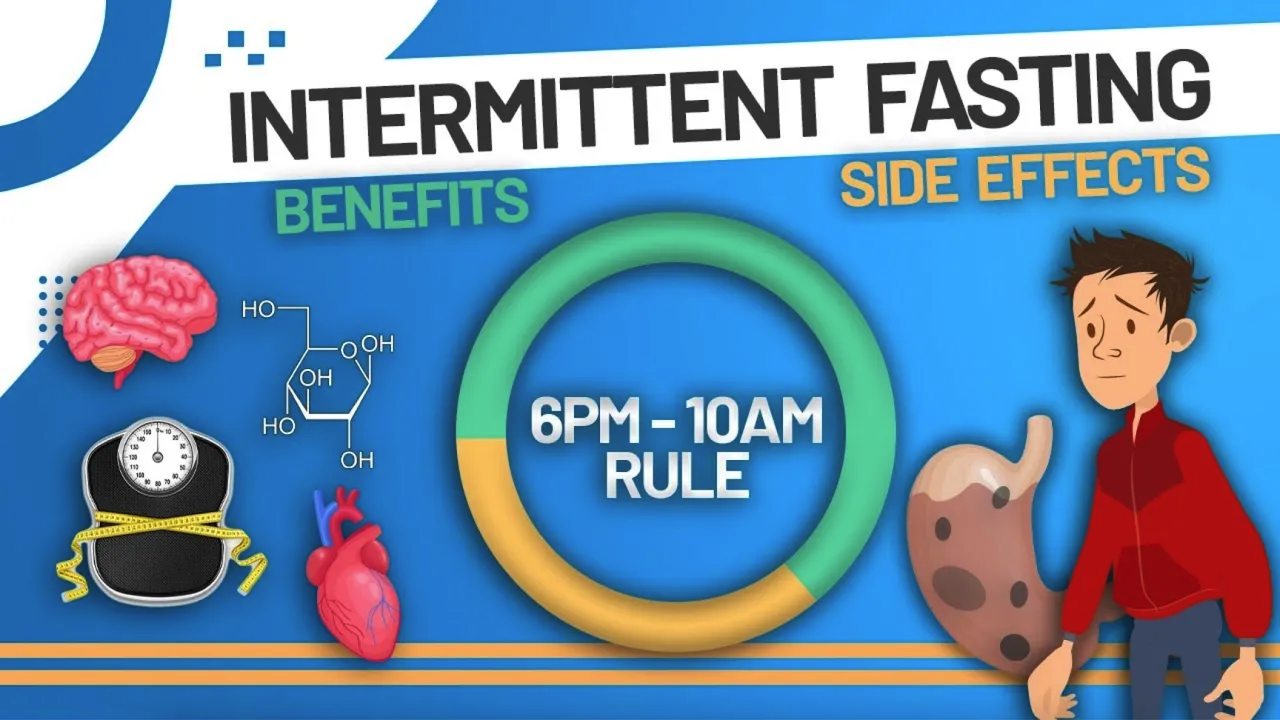Intermittent Fasting for Weight Loss: What Works, What Doesn’t, and Why
Intermittent fasting isn’t a fad. It’s one of the simplest, most sustainable ways to lose weight and reset your metabolism. By focusing on when you eat instead of what you eat, intermittent fasting helps your body burn fat more efficiently and naturally. Here’s how it works, why it helps, and how to make it part of your daily routine.
What Is Intermittent Fasting?
Intermittent fasting (IF) is an eating pattern that cycles between periods of fasting and eating. It doesn’t prescribe specific foods - it simply defines the timing. The most popular version is 16:8: - fasting for 16 hours (for example, from 6 pm to 10 am) and eating during an 8-hour window. Some prefer 18:6 or even a full 24-hour fast once or twice a week.
Fasting isn’t new. Humans have done it for centuries — sometimes by choice, sometimes out of necessity. What’s new is our modern understanding of how fasting affects metabolism and weight control.
How Intermittent Fasting Works for Weight Loss
When you stop eating, your body first burns stored glucose in the liver, called glycogen. After roughly 10–12 hours, glycogen runs low, and your metabolism flips from burning sugar to burning fat. This fat-burning state, called lipolysis, breaks triglycerides into fatty acids and then into ketone bodies — clean fuel for your cells. That’s the real mechanism behind intermittent fasting for weight loss. Shorter eating windows also reduce overall calorie intake and help you naturally maintain a calorie deficit — without counting or tracking every bite.
My 16:8 schedule looks like this: wake up at 5 am, tea with lemon, coffee between 6–8 am, gym at 8, and first meal around 10. Dinner ends by 6 pm. The hardest hour? Around 7–8 am, when I’m fully awake, pre-workout, and slightly hungry. But after a week or two, hunger stabilizes and fasting starts to feel effortless.
📺 If interested, here’s the link to the full video on YouTube on my daily IF schedule “How I Stick to a 16:8 Fasting Routine (Without Stressing About It)”.
Why Intermittent Fasting Helps You Lose Fat Faster
Fasting doesn’t melt fat overnight, but it trains your body to use fat efficiently. Lower insulin levels make your system more responsive to fat-burning hormones like human growth hormone (HGH) and norepinephrine. These help break down stored fat while protecting lean muscle.
Adding a fasted morning workout accelerates glycogen depletion, forcing your body to rely on fat sooner. That’s why many people consider this the best way to intermittent fasting for weight loss — combining fasting with exercise. The result is a leaner body composition, steady energy, and fewer food cravings throughout the day.
Other Proven Health Benefits
Intermittent fasting does more than burn fat. Research links it to broad improvements in overall health:
Better insulin sensitivity — reduces the risk of type II diabetes
Lower inflammation and oxidative stress — less cellular wear and tear
Improved cardiovascular health — lower blood pressure, resting heart rate, and better heart-rate variability
Sharper brain function — more acetylcholine supports focus and learning
Improved sleep and circadian rhythm — balanced melatonin and cortisol cycles
Cellular repair and longevity — fasting activates autophagy, your body’s built-in cleanup system
Even if you start fasting just to lose weight, your body and brain both benefit. For a deeper dive into all the scientifically supported and emerging effects of fasting, check out the “Fasting Benefits Backed by Science” page — it covers everything from metabolic health to longevity, brain function, and cellular repair.
Risks and Who Should Avoid It
Fasting isn’t for everyone. Common short-term issues include digestive discomfort (especially after eating too much too fast) and social inconvenience (no late-night dinners). Avoid intermittent fasting if you
are pregnant or breastfeeding,
are under 18,
have diabetes or hypoglycemia,
have a history of eating disorders, or
take medication that must be taken with food.
Always consult your doctor before starting. Fasting is powerful, but not universal.
Best Way to Start Intermittent Fasting for Weight Loss
The 16:8 method is the easiest way to begin.
Pick your targeted fasting window. Many start with 8 pm–noon — skip breakfast, eat lunch and dinner.
Increase gradually. Start with 12 hours and extend as your body adapts.
Stay hydrated. Water, black coffee, and unsweetened tea are all fine while fasting.
Choose whole foods during eating hours. Focus on protein, healthy fats, vegetables, and fiber — not sugary “reward” meals.
Exercise in the morning if possible. Light workouts help accelerate the metabolic switch.
Track your progress. Log your fasting data or use a tracker — you’ll quickly see how your body adjusts.
Within a few weeks, you’ll notice fewer cravings, better appetite control, and steady fat loss. That’s intermittent fasting working for you!
My Experience
I’ve tested everything from 16-hour fasts to 7- and 10-day extended fasts. The pattern is clear: intermittent fasting is the most sustainable long-term strategy for keeping fat off while staying mentally sharp. Yes, extended fasting is probably the fastest way to lose fat, but it’s not sustainable — it should be done occasionally and with proper preparation.
If you’re curious about what really happens during long fasts, take a look at the “Fasting Results & Data” page where I share how much weight and fat I lost (and later regained) during my extended fasts.
After the first couple of weeks, hunger stabilized, my workouts felt lighter, and my focus improved. Fasting stopped feeling like deprivation — it felt like my body was finally running the way it’s supposed to.
The Smartest Way to Lose Weight
If you want consistent, sustainable fat loss without counting calories, intermittent fasting for weight loss is your best ally. It works with your biology, not against it. By giving your body regular rest periods, you reset your metabolism, reduce inflammation, and train your system to burn fat efficiently.
Start simple, stay consistent, and don’t rush the process. The intermittent fasting for fastest weight loss is the one you can actually maintain.
Stay strong, stay curious — and let your metabolism do the work!
📺 If interested, here’s the link to the full video on YouTube “Intermittent Fasting: Benefits, Risks & What Actually Happens to Your Body”.


